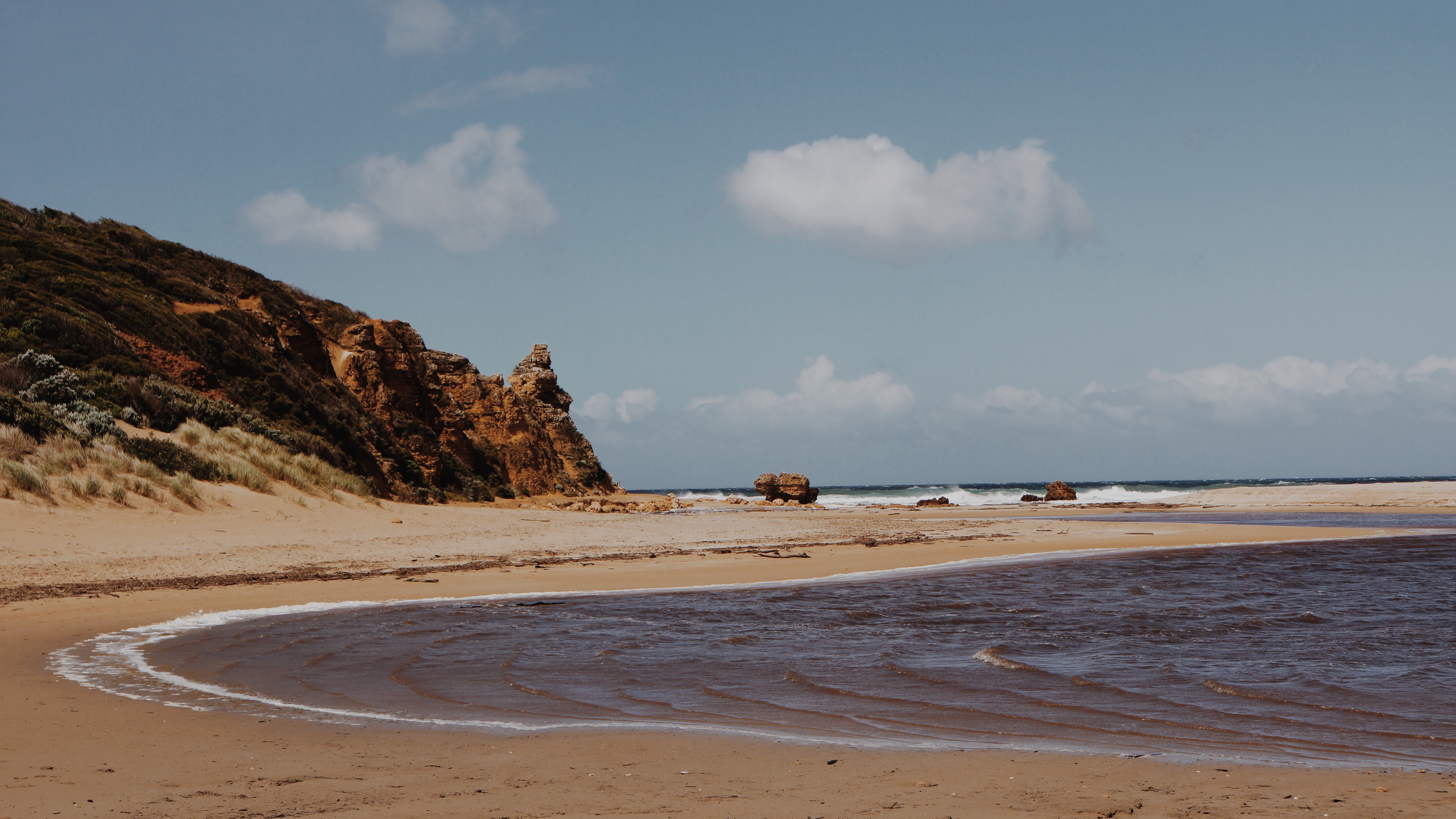|
Alpha Scorpio
''Alpha Scorpio'' was a short-lived Australian children's science fiction television series, written and produced by James Davern, and which aired on ABC Television in 1974. It starred Peter Hepworth and Kevin Wilson as two university students who begin to witness strange events while camping at Aireys Inlet in Victoria. The two soon discover that their friend Mirny ( Kurt Ludescher) is a member of a group of aliens who have recently landed from the 5th planet of Antares. The series lasted only six episodes. It is now considered lost media. Characters *Andrew ( Peter Hepworth) *Penny ( Alexandra Hines) *Steven ( Kevin Wilson) *McIntyre (Terry Gill) *Mirny ( Kurt Ludescher) *Bates (Ian Smith) *Collins ( Neville Thurgood) *Mr. Williams ( Frank Wilson) Episodes Plot Andy has brought a seismograph to the holiday hut because he studies geology. The instrument does not record much except artificial vibrations from passing ships and nearby road vehicles. One afternoon the i ... [...More Info...] [...Related Items...] OR: [Wikipedia] [Google] [Baidu] |
James Davern
James Edmund Davern, OAM, is an Australian television director, writer, script editor and producer, and founder of production company JNP Productions. Professional career Davern was employed as a writer and script editor with Australian Broadcasting Corporation (ABC) television branch in the 1960s. He worked as a producer and director in drama and music programmes and was involved in establishing a script production line. In 1967, Davern was director and producer of the very first episode of '' Bellbird'', Australia's first successful television soap opera, set in a rural community. Davern moved to the Seven Network where he created the highly popular series '' A Country Practice'', one of the most popular drama series in Australian television history. The series ran from 1981 to 1993 with 1,058 episodes. When the Seven Network cancelled '' A Country Practice'' in 1993, it was remade by Network 10 in 1994. Although James Davern moved to Network 10 to work on the "new" series. I ... [...More Info...] [...Related Items...] OR: [Wikipedia] [Google] [Baidu] |
Aireys Inlet
Aireys Inlet is a small coastal inlet and town located on the Great Ocean Road, southwest of Melbourne, Victoria, Australia. Aireys Inlet is located between Anglesea and Lorne, and joined with Fairhaven, Moggs Creek, and Eastern View to the west. Many surfers holiday in Aireys Inlet to take advantage of the popular Fairhaven beach. As the inclination of the beach can change dramatically between years, the surf is regarded as unpredictable. Swimmers should take note there is a strong rip current. Painkalac Creek, which separates Aireys Inlet from Fairhaven, forms a salt lake or inlet behind the sand dunes before it cuts through to the ocean. Due to low water levels in the inlet it is not often that the inlet breaks through. Aireys Inlet is also famous for Split Point Lighthouse which was featured in the popular children's TV show Round The Twist. There is also a horseshoe-shaped reef at Step Beach which forms an excellent swimming hole at low tide. The towns main attract ... [...More Info...] [...Related Items...] OR: [Wikipedia] [Google] [Baidu] |
Andra (novel)
''Andra'' is a 1971 science fiction novel, the first novel by English writer Louise Lawrence. at Louise Lawrence website In 1976 it was made into a children's by . Plot The book was set 2000 years from now, after the world was destroyed by war leaving the earth knocked off its rotation and the ground above to become a desolate frozen wasteland with everyone that survived living below the ground in underground cities. The main story revolves around Andra, a teenage girl who has a terrible accide ...[...More Info...] [...Related Items...] OR: [Wikipedia] [Google] [Baidu] |
Teleportation
Teleportation is the hypothetical transfer of matter or energy from one point to another without traversing the physical space between them. It is a common subject in science fiction literature and in other popular culture. Teleportation is often paired with time travel, being that the travelling between the two points takes an unknown period of time, sometimes being immediate. An apport is a similar phenomenon featured in parapsychology and spiritualism. There is no known physical mechanism that would allow for teleportation. Frequently appearing scientific papers and media articles with the term ''teleportation'' typically report on so-called " quantum teleportation", a scheme for information transfer which, due to the no-communication theorem, still would not allow for faster-than-light communication. Etymology The use of the term ''teleport'' to describe the hypothetical movement of material objects between one place and another without physically traversing the distance ... [...More Info...] [...Related Items...] OR: [Wikipedia] [Google] [Baidu] |
Bayer Designation
A Bayer designation is a stellar designation in which a specific star is identified by a Greek or Latin letter followed by the genitive form of its parent constellation's Latin name. The original list of Bayer designations contained 1,564 stars. The brighter stars were assigned their first systematic names by the German astronomer Johann Bayer in 1603, in his star atlas ''Uranometria''. Bayer catalogued only a few stars too far south to be seen from Germany, but later astronomers (including Nicolas-Louis de Lacaille and Benjamin Apthorp Gould) supplemented Bayer's catalog with entries for southern constellations. Scheme Bayer assigned a lowercase Greek letter (alpha (α), beta (β), gamma (γ), etc.) or a Latin letter (A, b, c, etc.) to each star he catalogued, combined with the Latin name of the star's parent constellation in genitive (possessive) form. The constellation name is frequently abbreviated to a standard three-letter form. For example, Aldebaran in the constellation ... [...More Info...] [...Related Items...] OR: [Wikipedia] [Google] [Baidu] |
Fedora
A fedora () is a hat with a soft brim and indented crown.Kilgour, Ruth Edwards (1958). ''A Pageant of Hats Ancient and Modern''. R. M. McBride Company. It is typically creased lengthwise down the crown and "pinched" near the front on both sides. Fedoras can also be creased with teardrop crowns, diamond crowns, center dents, and others, and the positioning of pinches can vary. The typical crown height is . The term ''fedora'' was in use as early as 1891. Its popularity soared, and eventually it eclipsed the similar-looking homburg. The fedora hat's brim is usually around wide, but can be wider, can be left raw-edged (left as cut), finished with a sewn overwelt or underwelt, or bound with a trim-ribbon. ''Stitched edge'' means that there is one or more rows of stitching radiating inward toward the crown. The Cavanagh edge is a welted edge with invisible stitching to hold it in place and is a very expensive treatment that can no longer be performed by modern hat factories. [...More Info...] [...Related Items...] OR: [Wikipedia] [Google] [Baidu] |
Siderial Time
Sidereal time (as a unit also sidereal day or sidereal rotation period) (sidereal ) is a timekeeping system that astronomers use to locate celestial objects. Using sidereal time, it is possible to easily point a telescope to the proper coordinates in the night sky. In short, sidereal time is a "time scale that is based on Earth's rate of rotation measured relative to the fixed stars", or more correctly, relative to the March equinox. Viewed from the same location, a star seen at one position in the sky will be seen at the same position on another night at the same sidereal time. This is similar to how the time kept by a sundial ( Solar time) can be used to find the location of the Sun. Just as the Sun and Moon appear to rise in the east and set in the west due to the rotation of Earth, so do the stars. Both Solar time and sidereal time make use of the regularity of Earth's rotation about its polar axis: solar time following the Sun while, roughly speaking, sidereal time f ... [...More Info...] [...Related Items...] OR: [Wikipedia] [Google] [Baidu] |
Lighthouse
A lighthouse is a tower, building, or other type of physical structure designed to emit light from a system of lamps and lenses and to serve as a beacon for navigational aid, for maritime pilots at sea or on inland waterways. Lighthouses mark dangerous coastlines, hazardous shoals, reefs, rocks, and safe entries to harbors; they also assist in aerial navigation. Once widely used, the number of operational lighthouses has declined due to the expense of maintenance and has become uneconomical since the advent of much cheaper, more sophisticated and effective electronic navigational systems. History Ancient lighthouses Before the development of clearly defined ports, mariners were guided by fires built on hilltops. Since elevating the fire would improve the visibility, placing the fire on a platform became a practice that led to the development of the lighthouse. In antiquity, the lighthouse functioned more as an entrance marker to ports than as a warning signal for reefs a ... [...More Info...] [...Related Items...] OR: [Wikipedia] [Google] [Baidu] |
Albatross
Albatrosses, of the biological family Diomedeidae, are large seabirds related to the procellariids, storm petrels, and diving petrels in the order Procellariiformes (the tubenoses). They range widely in the Southern Ocean and the North Pacific. They are absent from the North Atlantic, although fossil remains show they once occurred there and occasional vagrants are found. Albatrosses are among the largest of flying birds, and species of the genus ''Diomedea'' (great albatrosses) have the longest wingspans of any extant birds, reaching up to . The albatrosses are usually regarded as falling into four genera, but disagreement exists over the number of species. Albatrosses are highly efficient in the air, using dynamic soaring and slope soaring to cover great distances with little exertion. They feed on squid, fish, and krill by either scavenging, surface seizing, or diving. Albatrosses are colonial, nesting for the most part on remote oceanic islands, often with several spe ... [...More Info...] [...Related Items...] OR: [Wikipedia] [Google] [Baidu] |
Seismograph
A seismometer is an instrument that responds to ground noises and shaking such as caused by earthquakes, volcanic eruptions, and explosions. They are usually combined with a timing device and a recording device to form a seismograph. The output of such a device—formerly recorded on paper (see picture) or film, now recorded and processed digitally—is a seismogram. Such data is used to locate and characterize earthquakes, and to study the Earth's internal structure. Basic principles A simple seismometer, sensitive to up-down motions of the Earth, is like a weight hanging from a spring, both suspended from a frame that moves along with any motion detected. The relative motion between the weight (called the mass) and the frame provides a measurement of the vertical ground motion. A rotating drum is attached to the frame and a pen is attached to the weight, thus recording any ground motion in a seismogram. Any movement from the ground moves the frame. The mass tends not to m ... [...More Info...] [...Related Items...] OR: [Wikipedia] [Google] [Baidu] |
Frank Wilson (Australian Actor)
Frank Edward Wilson (11 April 1924 – 24 October 2005) was an Australian film, stage and television actor; musical comedy singer and director; and television game show and variety host. Early life Frank Wilson was born in 1924 in the Melbourne suburb of Northcote. He left school at the age of 13. In 1943, he joined the Australian Army, where he served as a Signalman in Borneo and Papua New Guinea until his discharge in 1945. He began acting in 1948, when he appeared at Melbourne's Tivoli Theatre. Career His best-known film appearances were in '' The Club'' (by David Williamson; a role that Wilson had created on stage), '' Crackerjack'', ''Breaker Morant'', '' Black Robe'' and ''Money Movers''. He also appeared in the 1956 Charlie Chaplin film '' A King in New York''. On television he appeared in ''Changi'' (a mini-series written by John Doyle), ''SeaChange'', ''Blue Heelers'', '' Water Rats'', ''Power Without Glory'', ''A Country Practice'', '' Bellbird'', ''Do ... [...More Info...] [...Related Items...] OR: [Wikipedia] [Google] [Baidu] |






